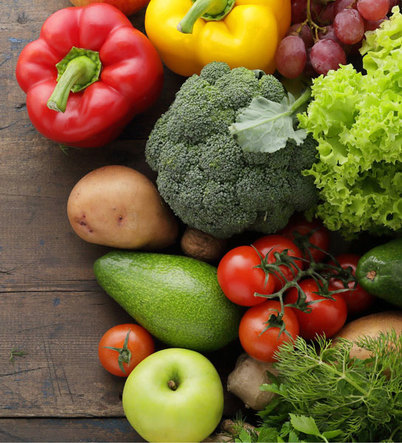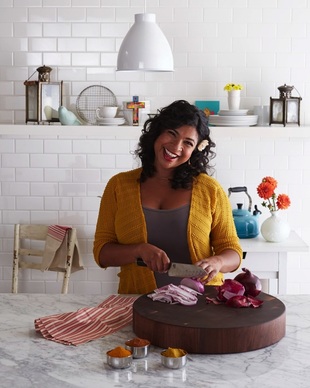 Revenue per customer is among the top key metrics restaurants use to gauge success. Generally, the more money each customer spends, the more the restaurant will profit. Restaurants employ dozens of techniques to bring up this ‘average check,’ from upsell and cross-sell to menu engineering and creative pricing strategies. Some restaurants choose to increase their revenue streams, such as adding new menu categories or introducing drink pairings. Regardless of the path you choose to elevate customer spend, it is imperative to know your limits. A fine line exists between increasing your average check and making your customers feel ‘nickeled and dimed.’ Naturally, no set boundary exists, but the key is to know your target customer and observe their behavior as you change things around. This game is all about balancing supply and demand, so increased revenue should outweigh any dropoff in volume you might see. Let’s take a look at some new trends, as well as longstanding debates around restaurant offerings. Think about how your customers would react in these scenarios: Valet Charges Most nice restaurants will offer valet service, but the question comes with whether to charge for that service in addition to the driver’s expected tip. Some might think that’s a quick $9/customer and as much as a few thousand dollars on a busy night. It’s also easy to assume that if someone’s prepared to spend $400 on a meal that the valet charge is nothing. From a consumer psychology perspective, however, the act [or even the thought] of paying on two separate occasions—once for the bill and once for the valet—can alienate even your most wealthy clientele. If your average party spends $400, it only takes a half-dozen groups going elsewhere over a rudimentary valet charge to take the idea into the red. If you get enough traffic to fill your restaurant anyway, then so be it, but be sure to monitor your sales to see if charging for valet has any significant effects. Everything a la Carte More and more places are treating sides as an additional revenue stream rather than including them with their respective entrees. High-end eateries can get away with this pretty easily, given the large price disparity between entrees [say, a $42 steak] and sides [$9 mashed potatoes]. Casual eateries, on the other hand, will almost always include sides with their entrees. It’s the places in between that have the most trouble deciding. As a general rule, if your add-ons are more than a third of the a la carte item cost, you’re charging too much. If customers are paying $12 for a burger and another $6 for fries, they’ll likely look at the fries like half an entrée rather than a side. When this is the case, you’ll get a lot of customers who will 1) choose not to order any fries at all, 2) never return to your restaurant, and 3) tell all of their friends about feeling nickeled-and-dimed. If you’re worried about keeping your margins, then take another look at your menu mix. Very few sides should cost that much to produce compared to entrees. If you’re not profiting off an item, change the recipe or take it off the menu. Cocktail Sizes and Prices A lot of new restaurants are getting caught up in the drink scene, offering a wide range of craft beers, fine wines and specialty cocktails. As is the case with sides, here it comes back to relativity. Some restaurants go so far as to price cocktails almost on par with their entrees. Keep the one-third rule in mind. Another trend is serving cocktails in increasingly smaller, yet visually appealing, glasses. You may win the battle by striking conversation among tables in the moment, but you will lose the war when people walk away realizing they paid for three drinks but only got the equivalent of two. Know Your Customer As always, it’s about knowing what your target customer wants and what they will ultimately put up with. Increasing average spend is a healthy goal for any restaurant, and expanding revenue streams is a great way to raise the bottom line. Just be sure to observe the effects of both. If dropoff exceeds new profit or if your core demographic begins to shift in a way you don’t like, take corrective action and promote the heck out of it immediately. It’s always better to keep your loyalists happy than to drive them away over a few extra dollars.
0 Comments
 ‘Real Food, Fake Food’ is a big hitter in foodservice transparency. In the same way that ‘Fast Food Nation’ exposed questionable practices from some of the world’s most prominent quick service giants, so too does ‘Real Food, Fake Food’ unveil some very unfortunate truths about restaurants and food suppliers that make false claims about their ingredients. The moral of the story: Tell the truth about the ingredients that you use, and make sure that your suppliers are doing the same. Easier said than done, of course. The real challenge comes not with telling the truth, but having your customers believe that you’re telling the truth. Here are a few tips to help garner trust among your customers: Show whole ingredients It’s easy to tell that a lobster is real when you see the whole thing presented to you before it’s cooked. The process becomes much harder with lobster ravioli, where lord-knows what kind of lobster-flavored combination is actually sitting between the pasta squares. Coffee beans are easy to prove as pure, but coffee grounds can have many foreign agents mixed in. If you’re in the position where you can show something whole before it’s chopped, ground, blended or battered, show it off. Servers presenting steaks and lobsters tableside is no nuance, but is also quite cumbersome for many eateries. Display cases are also common, but mostly among fine dining establishments. The solution can be as simple as a line on your menu that states “We will happily accommodate any requests to see our ingredients tableside.” Few patrons will take you up on this offer—minimizing operational setbacks—but will take comfort in your willingness to show your hand. Another option is to host regular kitchen tours. A weekly or monthly kitchen tour, coupled with a tasting menu or pairing event, could double as a great marketing tactic in addition to buying rapport. Boast only what you can back up If you charge a premium for cooking with foods of a certain label or status, be sure that clear standards exist whereby your food can truly earn that label. Just about anyone can slap the word ‘natural’ on their packaging without facing legal ramifications. It’s virtually impossible to find olive oil in the US that isn’t extra virgin, where in Italy only a small percentage of olive oil can actually tout that title. Only a handful of restaurants actually serve Kobe beef, and the term ‘American Wagyu’ is meaningless. The list goes on. Thousands of restaurants throw out arbitrary premium terms without walking the walk. Yes, they will win over uneducated customers, but they will ultimately lose the war. All it takes is a core group to call out these shenanigans and the restaurant’s reputation—and revenue—plummets. If your tuna is truly ‘sushi-grade,’ have some collateral around your restaurant, such as a certificate or a brief story about the tuna’s sourcing, to show for it. If you are ‘famous’ for anything, display your awards and depict the story on your menu. The proof is in the pudding, so make sure that you’ve got some killer pudding. Align your food with your brand Not all restaurants need to showcase premium ingredients. Sure, trendy terms deliver a good spark, but they don’t necessarily inspire guests to walk in or keep coming back. Greater forces—price point, ambiance, cuisine type, and just plain taste—may very well be the true active ingredients in a restaurant’s success. The last thing a restaurant should do is falsely promote certain ingredients to keep up with the Joneses. If you happen to use organic, all-natural ingredients, then do toot your own horn in a way where the guest can see immediate proof behind your claims. Don’t get carried away though, as stretching the truth beyond tangible evidence could introduce a level of skepticism you may not be prepared to handle. More and more restaurants are building their brands around ‘real food,’ and transparency is necessary for these brands to stay afloat. If you are not able or willing to provide that transparency, it doesn’t say anything negative about your restaurant, it simply means that you should think critically about the brand points that your restaurant stands on.  Aarti Sequeira is living the foodie dream. The winner of “Food Network Star” season six, Sequeira went on to host her very own Food Network Show, “Aarti Party,” as well as author her own cookbook, “Aarti Paarti: An American Kitchen with an Indian Soul.” She’s appeared on a dizzying number of cooking shows and assured the world of her talents by winning “Chopped All-Stars.” Getting to this point, however, was far from easy. Dubai-born Sequeira’s entrepreneurial journey didn’t even start in the kitchen. A journalism graduate from Northwestern University, Sequeira began her career behind the camera. It took a long time for her to discover her passion for cooking, and even longer for her to build that passion into a business. Sequeira took the time to discuss the fascinating path she took to land where she is today, as well as share her insights for all the aspiring food celebrities out there to do the same.
“When I was in New York, I was on a track. I knew exactly where I was professionally and where I was going. When I moved to LA to be with my husband, I found that it was hard to get work. But when I thought about it, the real reason it was hard is that I lost the hustle, I lost the appetite for [being a producer]. When I was in journalism school, one of my instructors said, ‘if you ever lose the fire, then you have to get out of it.’” “That’s when I started cooking. It’s been in my blood. My mom loves it, my dad is a huge foodie, my grandmothers were amazing cooks. Cooking is practical and healing at the same time. I found that when I followed a recipe, I could transform something raw and ugly, like an onion, into something beautiful, like a French onion soup. I found that the passion I had for news, I now had for cooking.” 2. What was it like getting scouted off of YouTube and onto Food Network? “When I started doing the YouTube show it was just pure joy. My husband [Brendan McNamara] was the director. After a while, a woman at [online food platform] Good Bites saw my YouTube channel and apparently said, ‘I can make that woman a star.’” “I started shooting cooking videos for them. I remember thinking, ‘holy cow I would do this for free.’ It was a moment where everything slowed down and I realized this is what I want to do.” “When people told me to try out for Food Network star, I thought there was no way that they would pick me. When you’re in the spotlight, you feel like all people want to do is look down on you. It was definitely a leap of courage and faith. And then they picked me. And when I won, it was incredibly validating.” 3. What advice do you have for all the food bloggers and youtubers out there looking to become the next Aarti Sequeira? “If you want a cooking show, well, just make one. It is easier than ever to set up a camera in your own home and film yourself. Learn to edit too. That helped me a lot.” “My big advantage in doing food network star is that I had basically already done the job. I had been doing it on my own for 9 months. I had the on-camera experience and the kind of recipes people were looking for. I knew the kinds of lines and film cuts that Food Network was looking for.” “For food bloggers, I blogged because I needed an outlet to talk about what was going on in my life and in the kitchen. It helped me figure out what my point of view was and what made me different as a chef. There’s a lot of copycats out there and you have to figure out a way to separate yourself. The only way to do that is to get yourself on a regimen of blogging 3 times a week. You just have to do it, and do it, and do it. I spent years of just writing and shooting and editing and blogging before going onto the Food Network.” |
AuthorBenjamin Brown is a seasoned restaurant writer and hospitality consultant, serving up SoCal's hottest food news and reviews. Categories
All
Archives
June 2021
@Foodie_Biz |
|
Home
About
Blog
Consulting Tips
Contact
Legal
|
Foodie Biz provides restaurant news and reviews for the food community, as well as consulting advice for restaurant owners and other hospitality professionals.
Contact Foodie Biz for media opportunities and freelance consulting projects. Contact Foodie Biz |



